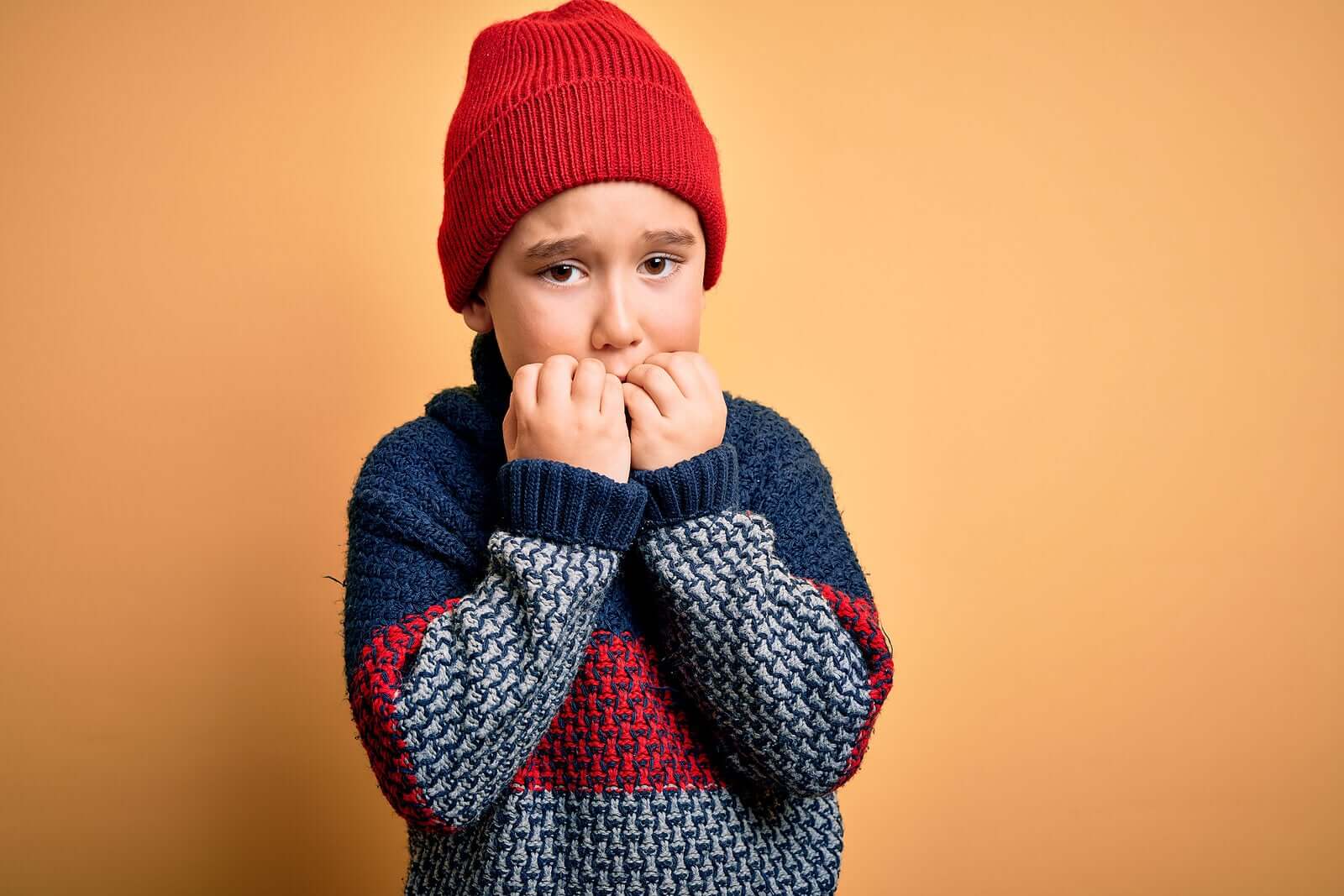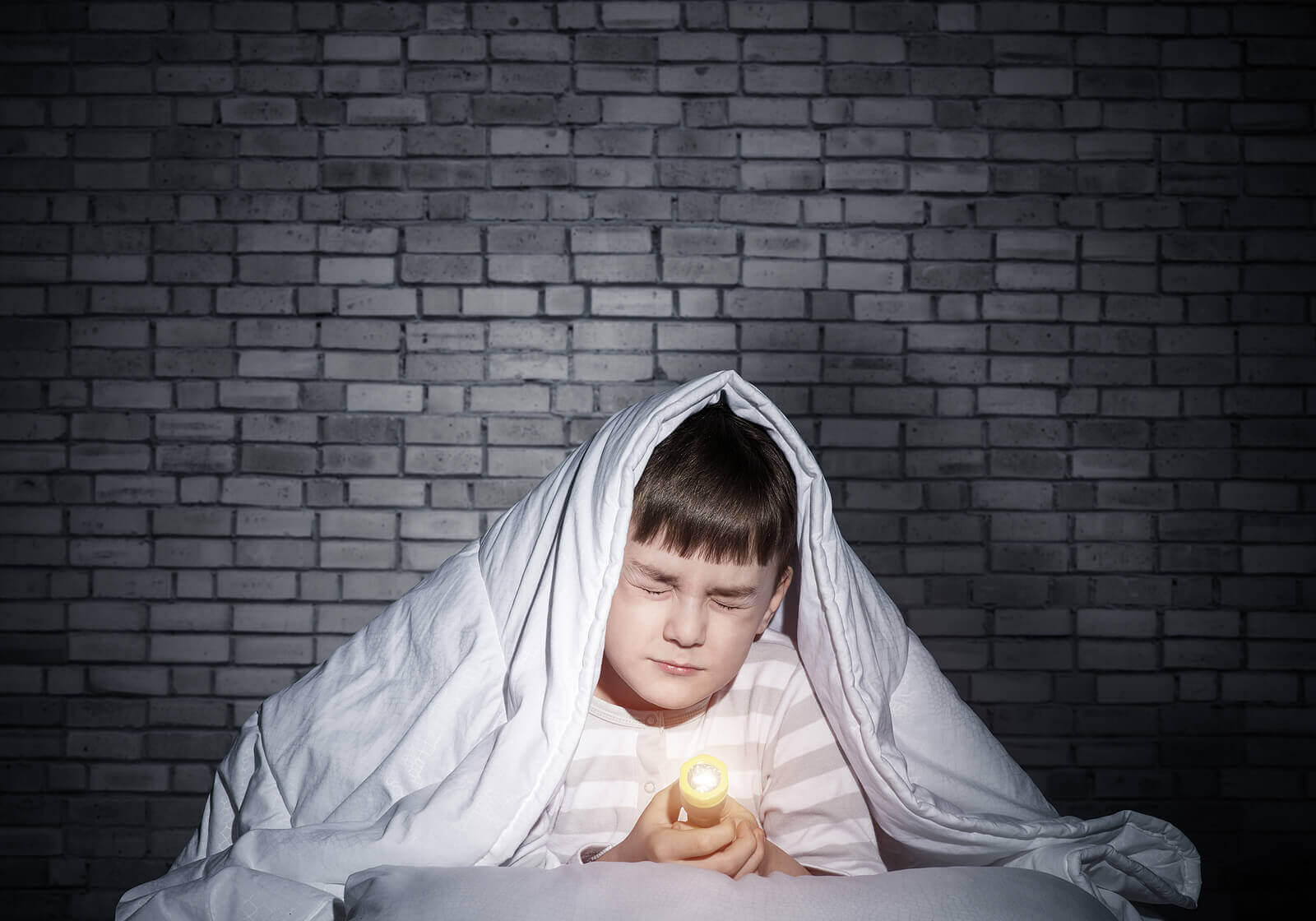How to Detect Phobias in Children and Prevent Their Progression


Written and verified by the psychologist Elena Sanz Martín
On many occasions, fears are natural and transitory, yet on other occasions, they can escalate if we don’t take action in time. Therefore, it’s necessary to know how to detect phobias in children when they’re in their initial stages.
Raising and educating children is a complex task that doesn’t come with any instruction manual. At certain moments of growth, children may experience intense fears that cause parents to worry. Many ask themselves if it’s normal and developmental or a matter of concern that requires intervention.
Childhood is a very important stage. At this age, children are like sponges, totally permeable to the information they receive from their environment.
Therefore, the attitudes they develop during these years will become part of their personality. In the same way, the coping tools they learn will be a fundamental part of their resources to get by in life.
Therefore, parents’ actions in the face of a possible child phobia is very important. The way they handle it can be a determining factor for the child’s future. In this way, if parents have the resources they need, they’ll be able to detect phobias in children. And, what’s more, you’ll be able to prevent them from establishing themselves and affecting your child’s day-to-day life.
How to detect phobias in children?

Be aware of normal, evolutionary fears
The main thing is to know what the typical and natural fears of each stage of growth are. There are certain evolutionary fears that are common to children of a certain age; they fulfill a biological function and disappear over time. Broadly speaking, they’re the following:
- Up to 6 months: Fear of loud noises and lack of support.
- 7-12 months: Fear of strangers and separation from main attachment figures.
- 1-2 years: Fear of physical harm, darkness and animals.
- 3-4 years: Fear of natural phenomena, such as storms, and a reticence toward unknown objects are included.
- 5-6 years: The fear of illness or harm to loved ones appears. There is also a fear that evil beings may appear in the dark.
- 7-8 years: Social fears begin, such as fear of ridicule or rejection.
- 9-12 years: Fear of lack of social acceptance increases and is coupled with fear of poor school performance and fear of death.
Distinguishes fear from phobia
The first step is therefore to check if it’s a fear that’s normal given the child’s age. But this isn’t enough, since it’s possible for an evolutionary fear to become a phobia. To detect if this is happening, you must look at the following issues:
- The fear, distress and discomfort experienced by the child is excessive and disproportionate, much greater than would be expected.
- The child tries to avoid situations related to what they fear at all costs or escapes from them as soon as possible. If they can’t avoid them, they endure them in spite of suffering enormous discomfort.
- This fear interferes significantly with their daily life and prevents them from functioning properly. This can manifest itself as an inability to sleep, to relate to others, or to perform daily activities.
- Over time, the fear doesn’t go away and increases.

How to act if you detect phobias in children?
First of all, it’s necessary that parents show understanding and respect for the child’s fear. Don’t ridicule them or minimize their feelings.
Next, you must try to make the child face the feared stimulus in a progressive and gradual way. But, to do so, you have to empower them and accompany them. Reinforcing their self-esteem is essential to make them feel capable of facing the challenge.
Use creativity to think of tricks that help reduce exposure anxiety. For example, an anti-monster spray or a cape that turns him into a superhero. As they face the feared stimulus, their fear will fade and their self-confidence will increase.
Positively reinforce every approach of your little one towards his fear and, above all, show them with your attitude that you understand them, that you’re with them, and that you’re sure they’ll succeed. Of course, if the situation continues, consulting a child psychologist will be the best decision.
On many occasions, fears are natural and transitory, yet on other occasions, they can escalate if we don’t take action in time. Therefore, it’s necessary to know how to detect phobias in children when they’re in their initial stages.
Raising and educating children is a complex task that doesn’t come with any instruction manual. At certain moments of growth, children may experience intense fears that cause parents to worry. Many ask themselves if it’s normal and developmental or a matter of concern that requires intervention.
Childhood is a very important stage. At this age, children are like sponges, totally permeable to the information they receive from their environment.
Therefore, the attitudes they develop during these years will become part of their personality. In the same way, the coping tools they learn will be a fundamental part of their resources to get by in life.
Therefore, parents’ actions in the face of a possible child phobia is very important. The way they handle it can be a determining factor for the child’s future. In this way, if parents have the resources they need, they’ll be able to detect phobias in children. And, what’s more, you’ll be able to prevent them from establishing themselves and affecting your child’s day-to-day life.
How to detect phobias in children?

Be aware of normal, evolutionary fears
The main thing is to know what the typical and natural fears of each stage of growth are. There are certain evolutionary fears that are common to children of a certain age; they fulfill a biological function and disappear over time. Broadly speaking, they’re the following:
- Up to 6 months: Fear of loud noises and lack of support.
- 7-12 months: Fear of strangers and separation from main attachment figures.
- 1-2 years: Fear of physical harm, darkness and animals.
- 3-4 years: Fear of natural phenomena, such as storms, and a reticence toward unknown objects are included.
- 5-6 years: The fear of illness or harm to loved ones appears. There is also a fear that evil beings may appear in the dark.
- 7-8 years: Social fears begin, such as fear of ridicule or rejection.
- 9-12 years: Fear of lack of social acceptance increases and is coupled with fear of poor school performance and fear of death.
Distinguishes fear from phobia
The first step is therefore to check if it’s a fear that’s normal given the child’s age. But this isn’t enough, since it’s possible for an evolutionary fear to become a phobia. To detect if this is happening, you must look at the following issues:
- The fear, distress and discomfort experienced by the child is excessive and disproportionate, much greater than would be expected.
- The child tries to avoid situations related to what they fear at all costs or escapes from them as soon as possible. If they can’t avoid them, they endure them in spite of suffering enormous discomfort.
- This fear interferes significantly with their daily life and prevents them from functioning properly. This can manifest itself as an inability to sleep, to relate to others, or to perform daily activities.
- Over time, the fear doesn’t go away and increases.

How to act if you detect phobias in children?
First of all, it’s necessary that parents show understanding and respect for the child’s fear. Don’t ridicule them or minimize their feelings.
Next, you must try to make the child face the feared stimulus in a progressive and gradual way. But, to do so, you have to empower them and accompany them. Reinforcing their self-esteem is essential to make them feel capable of facing the challenge.
Use creativity to think of tricks that help reduce exposure anxiety. For example, an anti-monster spray or a cape that turns him into a superhero. As they face the feared stimulus, their fear will fade and their self-confidence will increase.
Positively reinforce every approach of your little one towards his fear and, above all, show them with your attitude that you understand them, that you’re with them, and that you’re sure they’ll succeed. Of course, if the situation continues, consulting a child psychologist will be the best decision.
All cited sources were thoroughly reviewed by our team to ensure their quality, reliability, currency, and validity. The bibliography of this article was considered reliable and of academic or scientific accuracy.
- Méndez, F. X., Inglés, C. J., Hidalgo, M. D., García-Fernández, J. M., & Quiles, M. J. (2003). Los miedos en la infancia y la adolescencia: un estudio descriptivo. Revista Electrónica de Motivación y Emoción, 6(13), 150-163. https://www.researchgate.net/publication/28062475_Los_miedos_en_la_infancia_y_la_adolescencia_Un_estudio_descriptivo
- Grande, M. D. P. (2000). El miedo y sus trastornos en la infancia. Prevención e intervención educativa. Aula, 12. https://revistas.usal.es/index.php/0214-3402/article/view/3564/3584
This text is provided for informational purposes only and does not replace consultation with a professional. If in doubt, consult your specialist.








